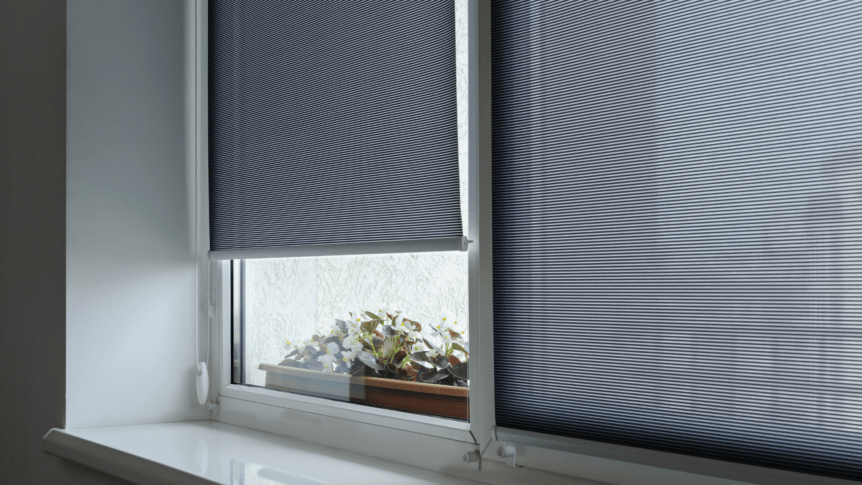Full article with thanks to: housebeautiful.com/home-remodeling/diy-projects/a35226507/diy-roman-shades
Ah, window treatments: They just may be the most overlooked part of a home’s design. Designers agree they’re a foundational part of any room’s design (after all, they often take up more square footage than anything besides the walls and floor covering), yet they’re often an afterthought in the design process. And while the daunting array of possibilities out there may have you resigned to just throwing up the simplest curtains, you don’t have to! If you have a sewing machine and a drill at home, you can make your very own Roman shades. These pleating, string-pulled window coverings are a favourite of high-end designers. And while they may look complex, they’re actually not all that complicated to DIY. If you have a few hours, the right tools, and a bit of patience, you can create your own—in any fabric you fancy. After watching photographer and blogger Lucy Cuneo document her first set on Instagram, we reached out to get the breakdown. Read on for her full tutorial.
What you’ll need:
- Fabric
- Lining fabric
- Yardstick
- Sewing machine
- Scissors
- Needle & thread
- Stitch Witchery Fusible Bonding Web
- Eye hooks
- Pins
- Screws
- Wood dowels
- Metal rod
- 2×2 wood piece
- Sew-on rings
- Drapery cord
- Cord lock
- Staple gun
- Drill
- Iron
How to make Roman shades:
1. Measure and prep
Measure the window where you want the blind and cut your fabric 3 inches wider than the window and 6 inches longer. Next, cut your fabric liner the same length as the fabric and one inch narrower.
2. Sew fabric and liner
Lay the fabric face up with the liner on top of it (so the pattern side of the fabric is covered). Pin both long sides together and sew, then iron to create the edge of your curtain. Don’t flip them right side out—yet!
3. Create rod pockets
Cut your wood dowels to be one inch narrower than the frame of your window. Then, cut strips of fabric liner a few inches wide. Fold them over, iron, and sew to create a pocket that will fit the dowels snugly (leaving an inch or two of fabric at the edge).
You’ll want to place your dowels 8-10 inches apart on your shade, so keeping in mind the total height of your window, space them evenly from the top down, leaving an extra inch for at the bottom. Mark with a pencil.
4. Attach rod pockets
Attach Stitch Witchery to your rod pocket by placing it atop the fabric and passing an iron just above it, without actually touching. Then, lay the pocket along the mark you’ve made and iron it onto the curtain with the Stitch Witchery between pocket and curtain. Repeat with all rod pockets and then slide the wood dowels in. Once the dowels are secure, flip inside out to reveal the front side of the fabric, with the liner behind it and the dowels inside.
5. Attach sewing rings
On the back (liner) side, along each dowel, measure 2 1/2 inches in from the edge and mark with a pencil, then mark the centre point on each. Using a needle and thread, attach sewing rings to the liner at each mark (there should be 9 total!).
6. Finish the bottom hem
Fold the bottom fabric 2 1/2 inches up and sew. Then slide in the metal rod to weigh down the bottom of the shade.
7. Finish top
Cut your 2×2 to the width of the inside of your window frame. Then, drill three holes in it, aligned with the rings (to attach your curtain with screws to the window frame) and screw an eye hook into one edge. Attach the cord lock next to the eye hook, if you want to be able to lock your cord when the shade is open (you can skip this for a shade you’ll tie to secure). Place the 2×2 with the eye hook on the side where you want your curtain cord, then wrap the top of your fabric around it and staple it in place.
8. Thread cord
Run your cord across the top of the curtain (through the eye hook and lock) and then down through the loops on the far side, securing it at the bottom one. Repeat this process across the top and down the middle row of hooks, securing at the bottom. Finally, thread the third piece of cord through the eye hook and down the final row of hooks, securing at the bottom. Leave 2-3 feet of cord at the non-tied end, then tie all three of these ends together in a knot. If you want, add a decorative pull.
9. Install and train
Using a drill, attach the 2×2 to the inside of your window frame with screws through the holes you made. The first few times you use the blind, “train” it, by gently guiding the pleats as you pull it up and down. After a few uses, the pleats will fall in the proper place. For this non-mechanical take on Roman shades, you’ll want to install some hardware to attach the cord to when the drape is up—that can be a hook or knob inside the frame of the window or beside it.
And voilà—you’ve got Roman shades!
Full article with thanks to: housebeautiful.com/home-remodeling/diy-projects/a35226507/diy-roman-shades
Did you enjoy that? Why not share this article.
Have you just moved into your new property and want to replace those old blinds or curtains? Or perhaps you’ve changed the decor in your home and want to upgrade your window dressing?
We create and deliver custom, made-to-measure blinds in a range of different materials and colours. From Venetian Blinds to Vertical Blinds, the choice is yours.
Simply book an appointment with us or get a quote.

